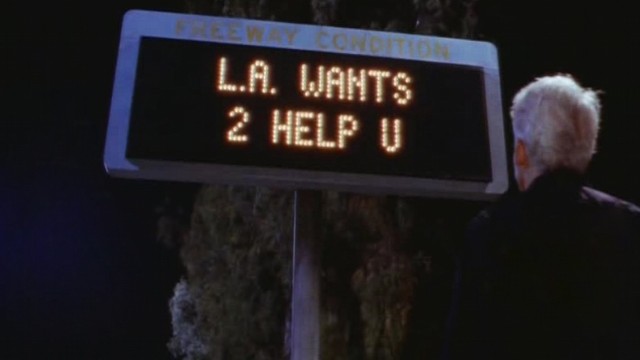I don’t get homesick very often. I grew up in Los Angeles County, but I hated it. I get heat sick very easily, and the air is just gross, and it’s too crowded while simultaneously being too spread out. However, on rare occasions, even I get homesick. It isn’t often, but when it does happen, I know exactly what to do. I shut myself up in my room and watch LA Story. It’s got several of the good bits while reminding me of the bad ones, and I recognize a bunch of the locations.
Comfort is deeply personal. What I find soothing and reassuring and what you find soothing and reassuring are not the same thing. Why would they be? I’m not even sure my older sister uses LA Story to combat homesickness, and we have a lot in common. Of course, it also came out right as she was getting ready to move away, and those three years probably made a difference. Still, I’m reasonably sure several of our other comfort practices are similar, because we were raised in the same house by the same person.
There’s a lot of focus on comfort food, and don’t get me wrong; I have that, too. But I think there isn’t enough awareness of other comfort objects. It’s strange, because some foods don’t count for people unless they’re exactly right—a specific restaurant’s food, or a dish prepared exactly the way a beloved relative did—but I can probably go on YouTube right now and find Steve Martin roller skating through the LA County Museum of Art. In this day and age, our comfort movies are totally portable.
I think it takes more than just having seen something a lot as a kid to make it a comfort film. If that were all it took, I’d watch The Angel and the Badman when I was depressed or whatever, because it’s one of my mother’s favourite John Wayne movies. I, conversely, have always hated it and have no interest in ever seeing it again. On the other hand, I own The Quiet Man and Donovan’s Reef, both also starring John Wayne, because I’m fonder of them and they remind me of my mother. One of my happiest memories is waking up very early Christmas morning once. My mother was in the other room, wrapping presents and watching Operation Petticoat. This tends to be my counter to the idea that happy childhoods require belief in Santa Claus, too; Mom out there wrapping presents and laughing at Cary Grant and Tony Curtis was, to me, evidence that everything was right with the world, and I very peacefully went back to sleep. And, yes, it’s a comfort movie now.
I plan to watch Ghostbusters for the first time next week (yeah, I know), and I’m kind of dreading it. This is because I’ve discovered that a lot of people get really touchy about the movies of their childhoods, because they become comfort movies if they liked the movies as kids. A lot of people I know probably feel that way about Ghostbusters, and if I don’t like it, someone’s going to resent me for it. Even if I can explain everything I dislike in a sensible and rational fashion, it won’t matter, because these are not issues of rationality. I mean, I can explain several problematic points about Operation Petticoat, too, but it doesn’t erase that feeling of perfect contentment that Christmas morning so long ago.
What has made me think about all of this is that a friend’s mother just died. Their relationship was very complicated, mostly because she was a terrible person, but I know that he is doing a lot of processing and has been ever since she was diagnosed with a glioblastoma multiforme tumor last month. There’s not a lot I can do for him; he’s got to work this out on his own, with the help of his significant other and hopefully with a therapist, if he can find a therapist soon. (The fact that he’s also mentally ill Does Not Help.) On the other hand, I asked him—his comfort movie is The Princess Bride. And if he didn’t already own it, which of course he does, he knows he can always borrow my copy.

